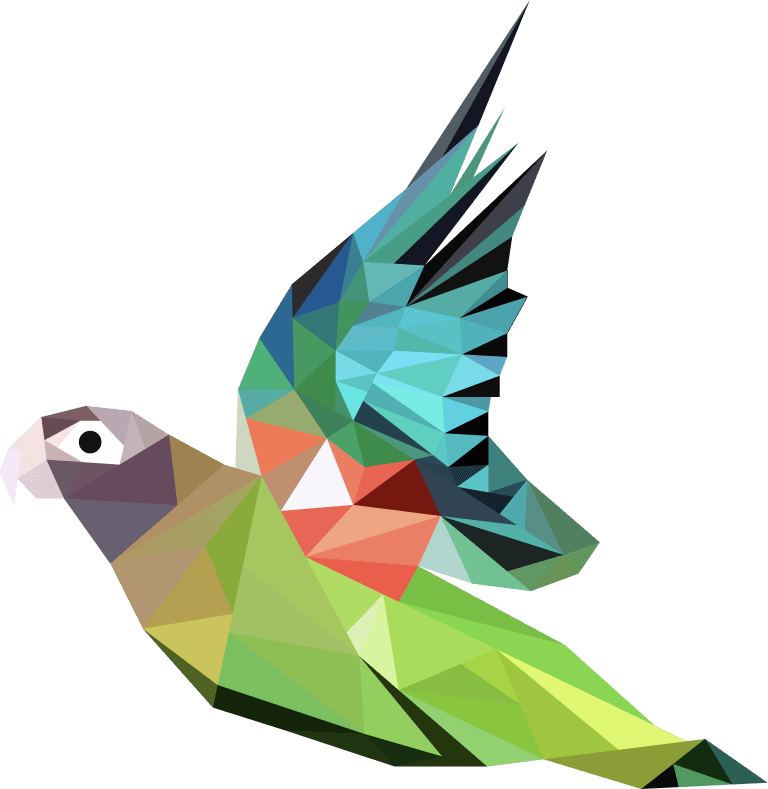Tillbaka
Pyrilia for Summer Learning: Keeping Track of Educational Goals

Introduction
The long, sun-filled days of summer offer a splendid break from the regular school year's hustle and bustle. However, this break can also lead to a significant gap in learning if not navigated wisely. While the allure of endless playtime and relaxation is strong, incorporating educational goals into the summer agenda can yield long-term benefits for learners of all ages. The challenge, though, lies in balancing this learning with the inherent leisure of summer without making it feel burdensome. This is where the strategic use of digital tools comes into play. They can transform the daunting task of summer learning into an enjoyable and fruitful endeavor, ensuring that students return to school not only refreshed but also ahead of the curve.
The Importance of Summer Learning
The concept of summer learning is pivotal yet often overlooked. Many students experience what educators refer to as the "summer slide," a phenomenon where knowledge and academic skills are lost over the summer break. This slide can be particularly pronounced in subjects like math and reading, where regular practice is crucial to retention. For instance, a study by the National Summer Learning Association highlighted that students could lose up to two months of reading skills over the summer if they don't engage in educational activities. Similarly, math skills suffer a setback, with children losing computational abilities they worked hard to acquire during the school year.
However, summer learning is not just about preventing regression. It's an opportunity to explore new interests, deepen existing passions, and cultivate skills that the regular school year might not accommodate. For example, a student fascinated by astronomy can use the summer to learn about the stars, constellations, and planets, perhaps even keeping a stargazing log. Another might dive into coding, creating simple video games or apps, turning screen time into a productive learning experience.
Yet, how does one ensure that these summer learning activities are effective and genuinely beneficial? The answer lies in setting clear, achievable goals. For instance, rather than a vague intention like "learn to code," a more effective goal would be "complete an introductory course in Python by the end of July." Such specificity not only provides a clear target but also makes it easier to track progress and maintain motivation.
Moreover, summer learning should not be a solitary endeavor. Engaging with peers, mentors, or family members can enhance the experience. A child learning to code can team up with a friend, fostering a collaborative environment that enhances their learning journey. Similarly, parents can participate in their child's learning, perhaps by reading the same book or engaging in a science project together, thereby reinforcing the idea that learning is a lifelong and shared pursuit.
In summary, summer learning is an essential component of a student's educational journey. It offers a unique blend of freedom and focus, allowing learners to explore, engage, and excel in ways that complement and enhance their traditional schooling experiences. By setting clear goals, embracing new learning opportunities, and incorporating a collaborative spirit, students can turn the summer break into a time of significant personal and academic growth.
Setting Effective Educational Goals
Setting effective educational goals is a cornerstone of successful summer learning. These goals provide direction and purpose, turning aimless activity into productive engagement. A widely accepted framework for setting such goals is the SMART criteria, which ensures that goals are Specific, Measurable, Achievable, Relevant, and Time-bound.
- Specific: A specific goal clearly defines what you want to achieve. Instead of a broad goal like "get better at math," a specific goal would be "improve my algebra skills by completing an online algebra course." This clarity helps focus efforts and resources effectively.
- Measurable: Measurable goals have concrete criteria for tracking progress and determining success. For instance, setting a goal to "read 10 books on various cultures" provides a quantifiable way to monitor advancement.
- Achievable: Goals should be challenging yet attainable. An achievable goal for a student might be "learn to solve quadratic equations" rather than "become a math genius."
- Relevant: A goal is relevant when it aligns with broader objectives and interests. A student interested in environmental science might set a goal to "conduct a local water quality survey" to contribute to their understanding of the field.
- Time-bound: Attaching deadlines to goals creates a sense of urgency and helps in planning. For example, "finish a beginner's Spanish course by the end of August" establishes a clear timeframe.
Let's consider a few examples of effective educational goals for the summer:
- Complete a photography course and create a portfolio of 20 unique photos by the end of July.
- Read and summarize five classic novels to enhance comprehension and analytical skills by August 15.
- Master 30 yoga poses to improve physical well-being and focus, practicing thrice a week throughout the summer.
By setting SMART goals, students can transform their summer into a period of meaningful and structured learning, paving the way for academic and personal growth.
Tracking Progress: Why It's Essential
Tracking progress is an integral part of the learning process, especially during the less structured summer months. Monitoring advancements provides motivation, insights into one's learning style, and a sense of accomplishment. It also allows learners to adjust their strategies if they are not on track to meet their goals.
The act of tracking serves as a continuous feedback mechanism, enabling learners to celebrate successes and identify areas needing more focus. For instance, a student working on a summer reading goal can track the number of books read, noting not just the quantity but also reflecting on the themes, characters, and personal takeaways from each book. This reflective practice deepens the learning experience, transforming passive reading into an active exploration of literature.
Moreover, tracking progress helps in building discipline and self-regulation skills. It encourages learners to set aside time for their educational activities, develop consistent study habits, and take ownership of their learning journey. For example, a student learning to play a musical instrument over the summer might set practice milestones and record each session's achievements, using these records to motivate sustained effort and practice.
Reflecting on progress is equally vital. It enables learners to connect the dots between their efforts and outcomes, fostering a growth mindset. For instance, by reviewing their progress in a coding project, a student can see how their problem-solving skills have evolved, reinforcing the value of persistence and strategic thinking.
In essence, tracking progress and reflecting on it are crucial for maximizing the benefits of summer learning. They turn abstract goals into tangible outcomes, ensuring that the summer is not just a time of relaxation but also a period of significant achievement and personal development.
How Can a Digital Journal Aid in Summer Learning?
In the digital age, leveraging technology to enhance learning is not just beneficial; it's essential. Digital journals, in particular, offer a unique blend of convenience and functionality that can transform the summer learning experience. They serve not just as repositories of information but as dynamic platforms where students can set goals, track progress, and reflect on their learning journey. A digital journaling tool, especially one designed with education in mind, can help students organize their thoughts, set specific objectives, and monitor their achievements over time.
Consider the advantages of using a digital journal like Pyrilia for summer learning. With features like Organized Storage, students can categorize their educational goals and resources, making it easy to find and revisit information. Whether it's a collection of articles, a list of math problems, or a series of reflective journal entries, having everything in one place simplifies the learning process. Moreover, the Journals feature in Pyrilia allows students to record daily insights, achievements, and even setbacks, enabling them to see their progress over time and adjust their learning strategies accordingly.
By integrating these tools into their summer learning routine, students can maintain a clear focus on their goals, monitor their progress, and adapt their approach to learning, ensuring that they not only retain what they've learned but also build upon it.
Practical Tips for Using Pyrilia to Track Educational Goals
Implementing a goal-tracking system in Pyrilia can significantly enhance a student's ability to achieve their summer learning objectives. Here's a step-by-step guide to make the most out of Pyrilia for setting and tracking educational goals:
-
Define Your Goals: Start by defining clear, achievable goals. Use the Journals feature to write down what you aim to achieve by the end of the summer, ensuring your goals are specific, measurable, achievable, relevant, and time-bound (SMART).
-
Organize Your Resources: Utilize Pyrilia's Organized Storage to categorize and store any educational materials or resources you gather. Whether it's articles, online course links, or reading materials, having them neatly organized will make your learning process smoother.
-
Daily Reflections: Make it a habit to record daily reflections in your journal. Note what you learned, any challenges you faced, and how you plan to overcome them. This daily practice not only reinforces your learning but also keeps you engaged with your goals.
-
Track Your Progress: Use the Journals feature to regularly update your progress toward your goals. Documenting your achievements, no matter how small, can provide a significant motivational boost.
-
Review and Reflect: Regularly review your past entries, leveraging the Replay Feature to reflect on your journey. This can offer invaluable insights into your learning patterns, helping you identify what works best for you and where you need to adjust your strategies.
By following these steps, students can effectively use Pyrilia to support their summer learning goals, turning the summer break into a period of significant personal and academic growth.
Balancing Fun and Learning
Summer is synonymous with fun, relaxation, and freedom from the structured schedules of the school year. However, integrating learning into this carefree season doesn't have to dampen the spirit of summer. In fact, when done correctly, educational activities can add an enriching layer to the fun. The key lies in striking a balance between learning and leisure, ensuring that educational pursuits feel like a part of summer's joy, not a departure from it.
One effective strategy is to intertwine learning with activities that students already enjoy. For instance, if a student has a penchant for cooking, they can explore the science behind different cooking techniques or the mathematics of recipe proportions. For those who love the outdoors, a nature hike can turn into a lesson in biology or environmental science. Even vacations can be educational, with family trips offering opportunities to learn about history, geography, and culture.
Digital journals can play a pivotal role in this balanced approach. Students can use a journal to plan their summer days, ensuring a mix of fun and educational activities. They can document their experiences, reflecting on what they've learned and how they've enjoyed the process. This reflection not only reinforces learning but also allows students to see how education can be a fulfilling and integral part of their daily lives.
Conclusion
Summer learning is an invaluable component of a student's educational journey, offering a unique opportunity to explore, engage, and grow in a relaxed environment. By setting clear, achievable goals and tracking progress, students can maximize the benefits of their summer learning efforts. Digital tools, particularly digital journals, are instrumental in this process, providing a platform for organization, reflection, and growth.
As we've explored, balancing educational pursuits with summer fun is not only possible but also immensely rewarding. It allows students to discover new interests, deepen existing passions, and view learning as a continuous, enjoyable journey. With the right approach and tools, summer can transform from a period of potential regression to a season of remarkable growth and discovery.
We encourage students and educators alike to embrace the potential of summer learning. With a plan in place and the right digital tools at your disposal, the summer break can be a time of both rejuvenation and profound learning. Embrace the season with enthusiasm and a commitment to growth, and watch as the summer unfolds into an enriching and memorable experience.
"How can I prevent my child from falling behind during the summer?"
One of the most effective ways to prevent your child from experiencing the "summer slide" is to keep them engaged in educational activities throughout the break. However, this doesn't mean they need to be stuck with traditional schoolwork all summer long. Integrating learning into daily activities in a fun and interactive way can keep them curious and motivated. Using a digital journal can significantly enhance this process. It allows your child to track their daily activities, reflect on what they've learned, and see their progress over time.
For instance, if your child reads a book, they can jot down what they learned or their thoughts about the story in the journal. If they engage in a science experiment at home, they can document the procedure and results, turning a fun activity into a learning experience. This practice not only reinforces the knowledge they've gained but also helps them develop a habit of reflecting on and valuing their learning experiences. By regularly reviewing their journal entries, they can see the accumulation of their summer learning, which can be incredibly rewarding and motivating.
"What's the best way to track my summer learning goals?"
The best way to track your summer learning goals is by using a digital journaling app that offers structured yet flexible features to monitor your progress. An app like Pyrilia provides an ideal platform with its Organized Storage and Journals features, allowing you to set specific goals, categorize your learning activities, and reflect on your daily progress.
For example, you can create different sections in your journal for various subjects or skills you're focusing on. Within these sections, you can set specific goals, such as "Learn 20 new Spanish words each week" or "Complete 5 science experiments by the end of July." By documenting your daily activities and achievements, you can track your progress toward these goals in real-time. The act of writing down what you've learned each day not only helps solidify the information in your memory but also provides a tangible sense of accomplishment. Additionally, reviewing past entries can offer insights into your learning patterns and help you adjust your strategies to maximize effectiveness. By leveraging the features of a digital journaling app, you can maintain a clear and organized record of your summer learning, making it easier to stay motivated and achieve your educational objectives.
Om du gillade inlägget, överväg att gå med i Pyrilia.
Pyrilia är den perfekta platsen att lagra dina tankar, minnen och reflektioner.
Fånga dagliga tankar, lyft fram meningsfulla upplevelser och återupplev dem med vår unika Replay-funktion. Omfamna en resa av förbättrade minnen och självupptäckt. Din berättelse, vackert bevarad.
Prova det

Kolla in våra andra inlägg:




